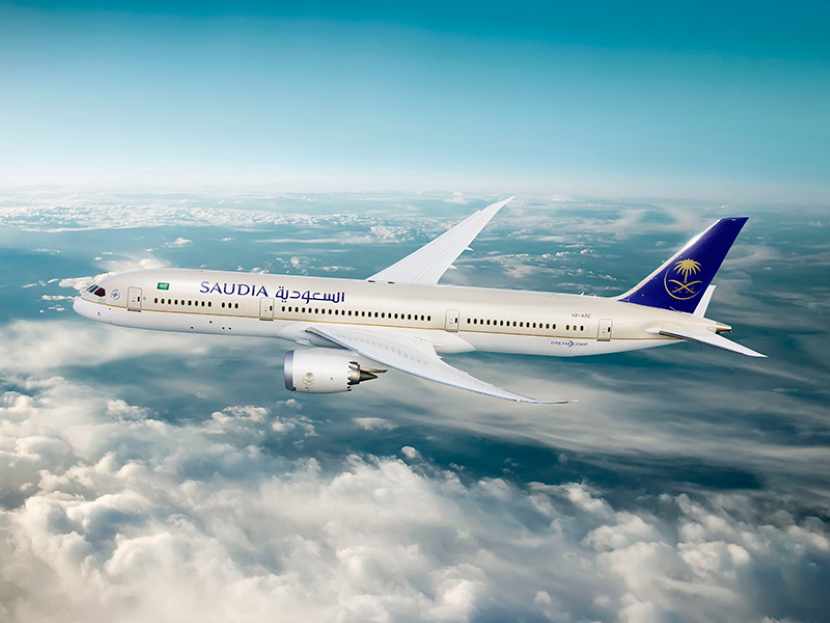Published on
August 26, 2025
Saudia, FlyDubai, and Royal Jordanian face new travel disruptions that continue to unsettle passengers across the region. With 11 flight cancellations reported, the impact has stretched across Saudi Arabia, Iran, the United Arab Emirates, and more. Passengers have been left stranded at Dubai, King Khalid, Bahrain, and other airports, waiting for updates and struggling to rearrange their journeys. Consequently, travellers are facing delays, long queues, and mounting frustration at critical hubs.
Affected Airports and Cities:
The recent disruptions affected several major airports and cities across the Middle East and Asia. In Saudi Arabia, cancellations and delays were reported at King Khalid International Airport in Riyadh, King Abdulaziz International Airport in Jeddah, Prince Mohammad Bin Abdulaziz International Airport in Medina, Tabuk Regional Airport in Tabuk, and Ta’if Regional Airport in Ta’if. Regional connections were also disrupted at Bahrain International Airport in Manama. In Iran, operations at Bandar Abbas International Airport in Bandar Abbas were impacted, while in the United Arab Emirates, both Dubai International Airport in Dubai and Al Maktoum International Airport in Dubai faced cancellations. Finally, in Jordan, flights at Queen Alia International Airport in Amman were affected, along with Jinnah International Airport in Karachi, Pakistan, which experienced disruptions linked to Royal Jordanian services.
Airline-by-Airline Breakdown
Saudia’s Operational Strain
As Saudi Arabia’s flagship carrier, Saudia experienced the greatest disruption. The airline cancelled 9 flights, representing 1% of its total operations, while 142 flights were delayed, equalling 23% of scheduled services. This level of disruption indicates systemic pressures at the heart of Saudia’s network, particularly at its hubs in Riyadh, Jeddah, and Medina.
The cancelled routes included domestic services between Riyadh, Tabuk, Medina, and Ta’if, alongside international operations to Bahrain and Pakistan. The large proportion of delays highlights increasing congestion and strain on resources, especially at King Khalid International Airport in Riyadh and King Abdulaziz International Airport in Jeddah. For an airline central to Saudi Arabia’s Vision 2030 tourism and economic ambitions, these figures underline the importance of reliability in passenger confidence.
FlyDubai’s Limited Cancellations, Noticeable Delays
In contrast, FlyDubai managed to keep cancellations minimal, reporting just 1 cancelled flight—a route between Bandar Abbas in Iran and Dubai International Airport. However, delays told a different story. The airline reported 45 delays, equating to 11% of its services.
Operating out of Dubai International Airport and Al Maktoum International Airport, FlyDubai is well-known for its role in connecting underserved routes across the Middle East and beyond. While the low cancellation figure demonstrates resilience, the delays show that even Dubai’s advanced infrastructure cannot shield airlines from wider airspace restrictions and operational bottlenecks.
Royal Jordanian’s Disruptions Through Amman
Royal Jordanian faced one cancelled flight and 18 delays, accounting for 14% of scheduled services. The disruptions primarily involved flights between Queen Alia International Airport in Amman, Al Maktoum International Airport in Dubai, and Jinnah International Airport in Karachi.
Although cancellations remained minimal, the percentage of delays is concerning for a smaller carrier with limited fleet flexibility. Unlike larger airlines that can reassign aircraft, Royal Jordanian’s network is more vulnerable to schedule disruptions, creating noticeable ripple effects for onward journeys through Amman.
Passenger Impact and Regional Implications
The Human Side of Disruption
Behind every statistic are passengers facing long waits, missed connections, and rearranged travel plans. Families heading for holidays, business travellers with time-sensitive commitments, and students returning to universities abroad all faced uncertainty at terminals in Dubai, Riyadh, Bahrain, and Amman. The growing percentage of delays—particularly Saudia’s 23% rate—illustrates how widespread the problem has become.
Operational and Regional Factors
The disruptions come against a backdrop of volatile regional conditions. Restricted airspace over parts of the Middle East has forced reroutes, while high passenger demand puts further strain on airlines and airports. For carriers such as Saudia, FlyDubai, and Royal Jordanian, the operational challenges are magnified by geopolitical uncertainties and infrastructure bottlenecks at key hubs.
Practical Guidance for Travellers
Passengers facing similar conditions in the coming weeks are encouraged to adopt a proactive approach when planning their journeys. The most important step is to check flight status frequently. Airlines now provide real-time updates through mobile apps, SMS alerts, and airport websites. Staying updated can help travellers avoid unnecessary waiting times at terminals and allow them to adjust their plans before reaching the airport.
Another crucial measure is to arrive early at the airport, particularly at busy hubs such as King Khalid International in Riyadh and Dubai International Airport, where disruptions and longer queues have been reported. Extra time ensures smoother passage through check-in, security, and immigration, reducing the risk of missing a rescheduled or alternative flight.
Travellers should also consider flexible bookings or comprehensive travel insurance, especially for long-haul or connecting flights. Flexible options allow rebooking without heavy penalties, while insurance may cover hotel stays, meals, or alternative transport if cancellations extend travel plans.
Finally, it may be wise to explore alternative airports such as Abu Dhabi or Doha, which often act as reliable backups during peak disruptions. Diversifying departure or arrival options gives passengers a better chance of avoiding bottlenecks at heavily congested hubs.
Conclusion
For Saudia, FlyDubai, and Royal Jordanian, the latest disruptions highlight the delicate balance airlines must maintain between operational efficiency and external challenges. For travellers, they serve as a reminder that air travel remains vulnerable to delays, cancellations, and unexpected changes. Yet, amid the uncertainty, resilience continues to shine through—airline staff working tirelessly to rebook passengers, fellow travellers offering support, and airports adapting their systems to handle the pressure. While 2025 has brought turbulence to Middle Eastern skies, the determination to keep passengers moving safely and reliably remains strong. As the skies clear, travellers can hope for smoother journeys and a renewed confidence in the airlines that connect the region to the world.
Source: FlightAware
Image Credit: www.saudia.com


